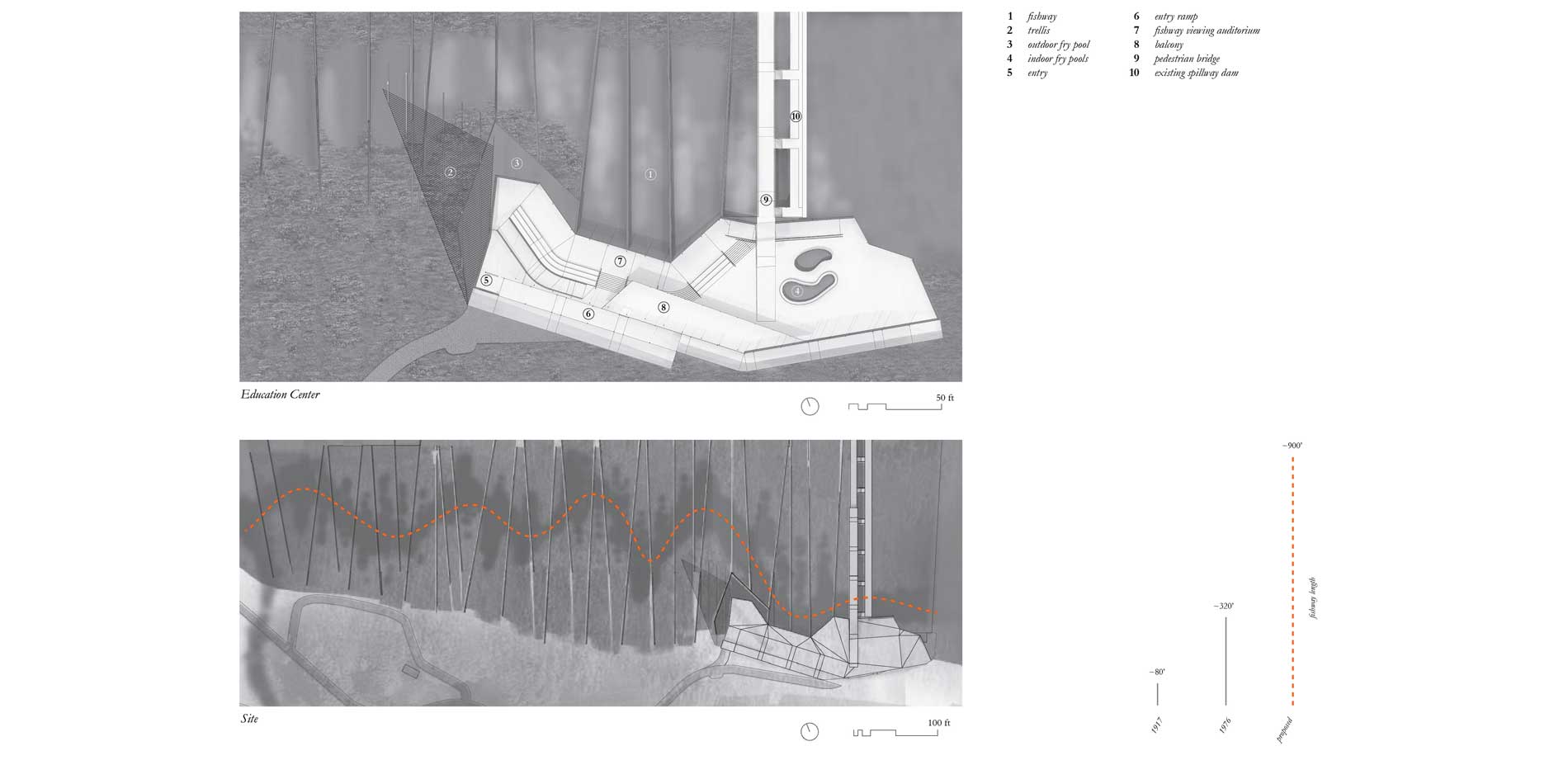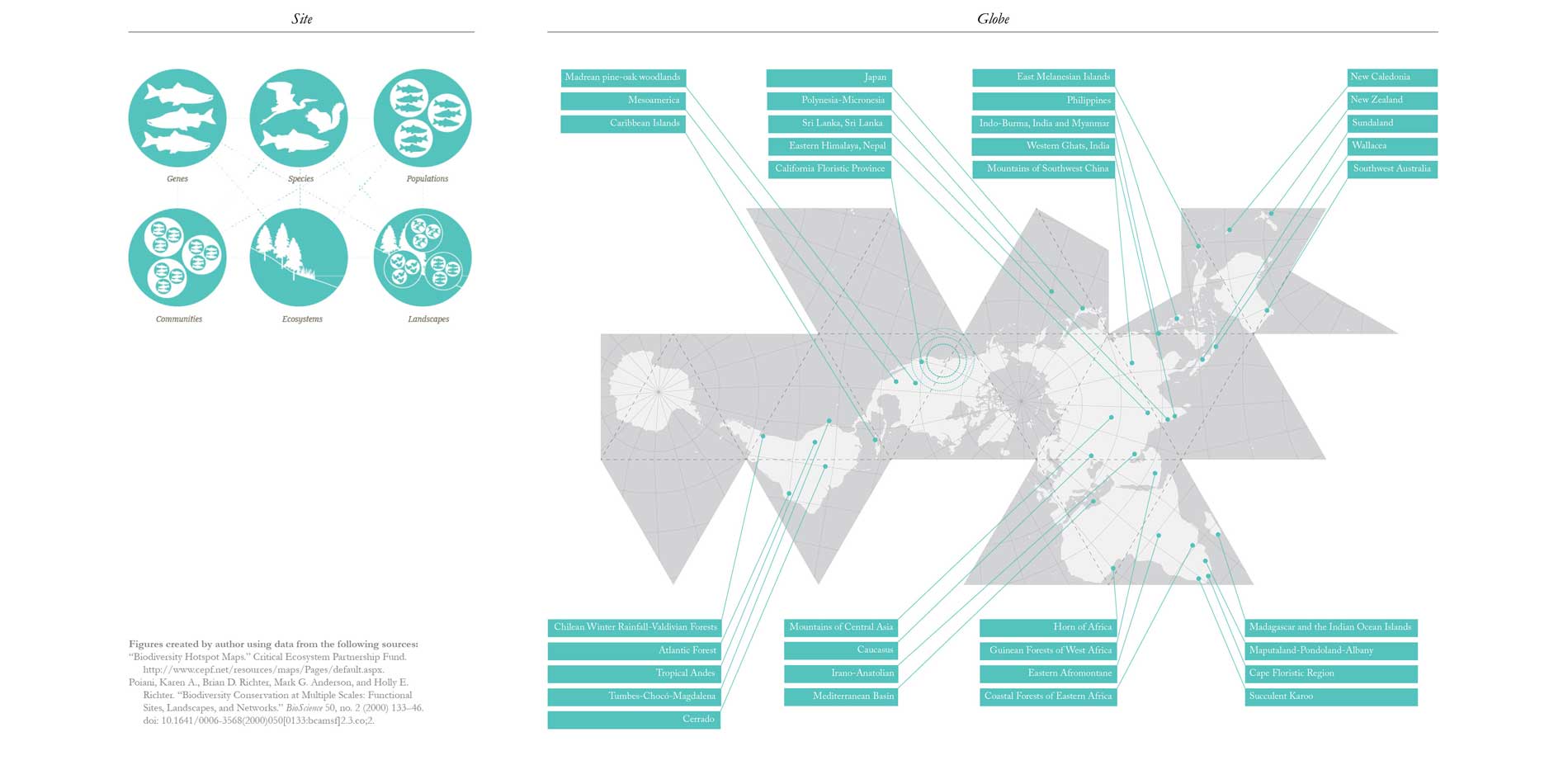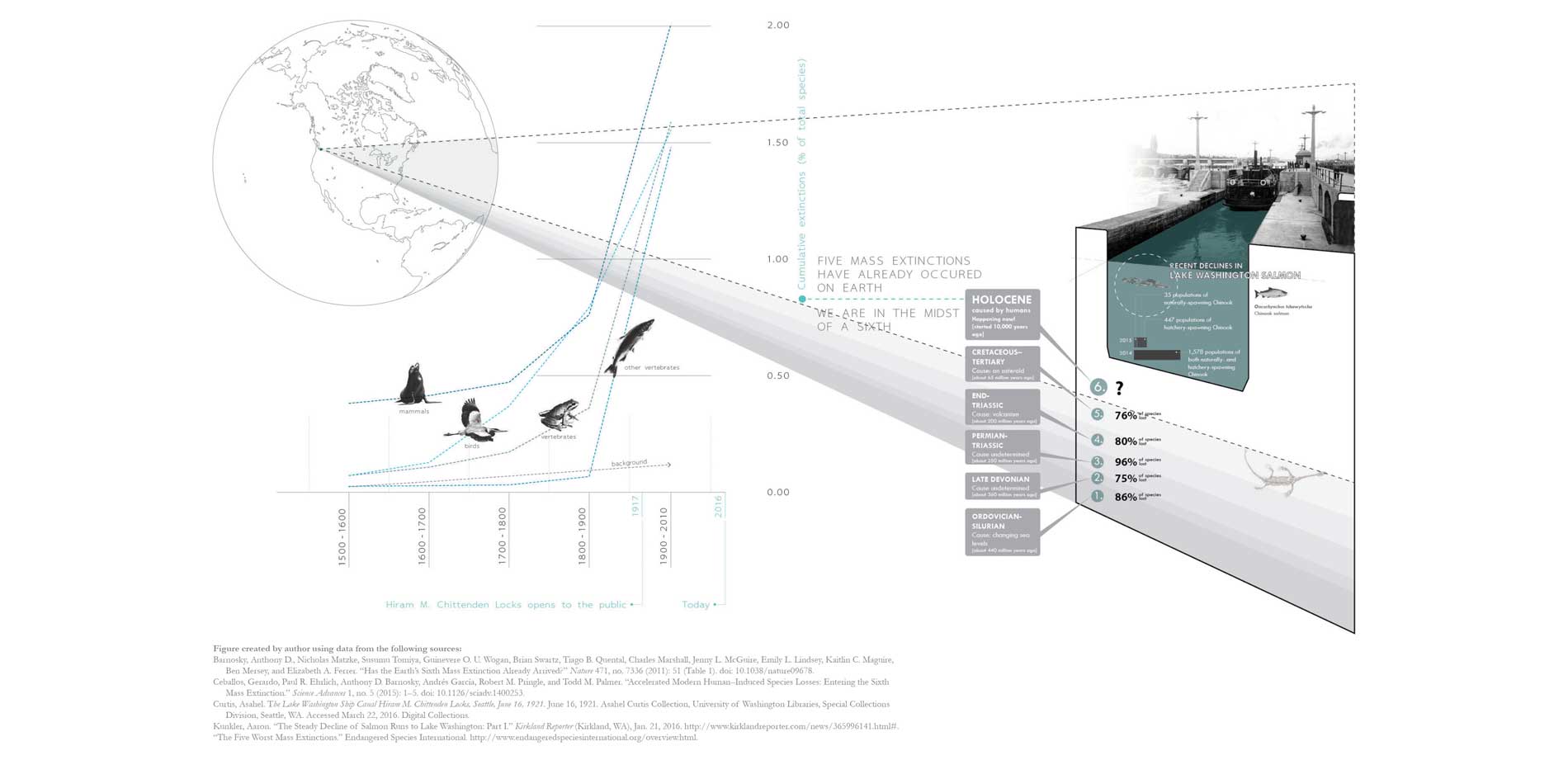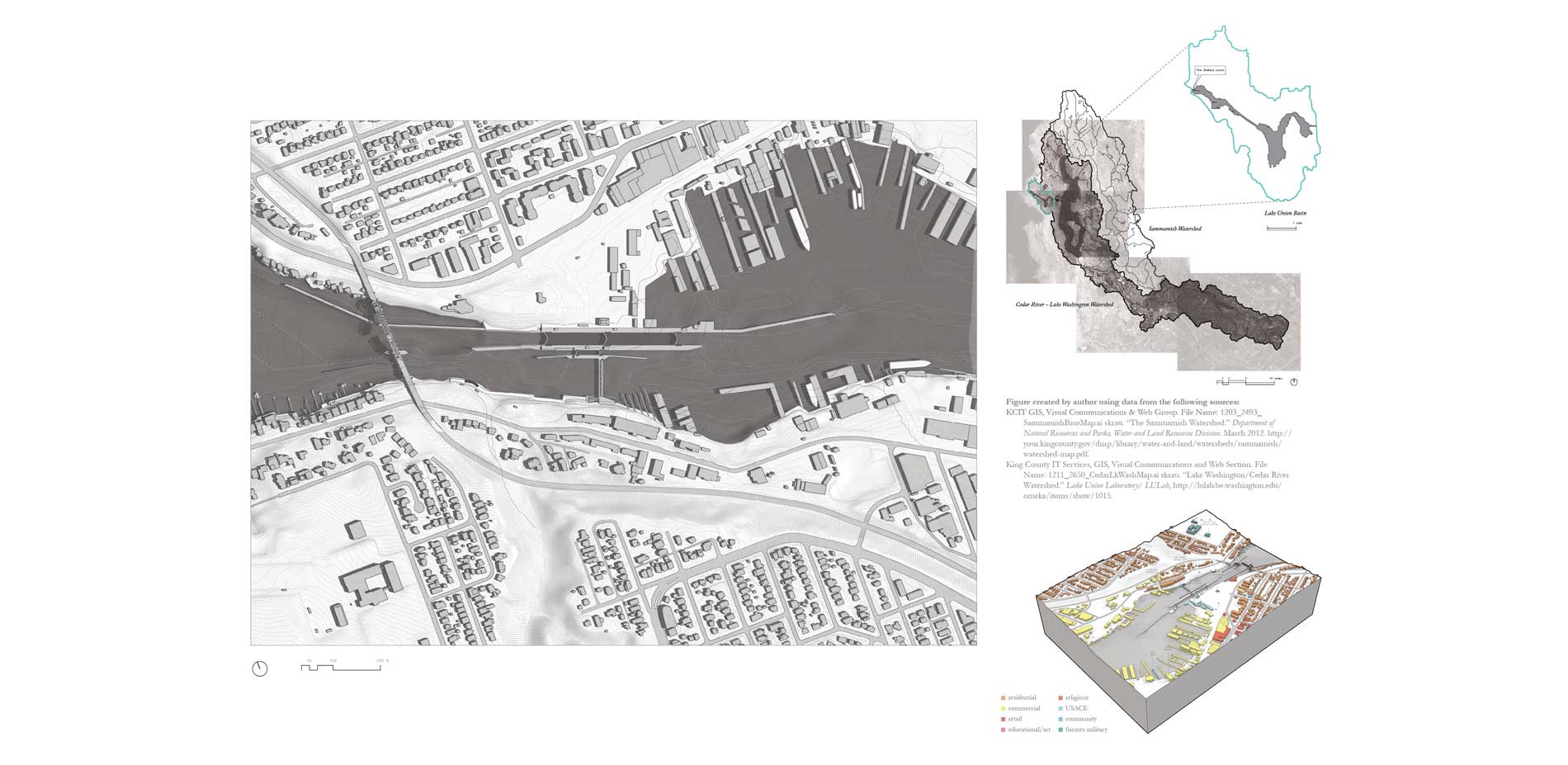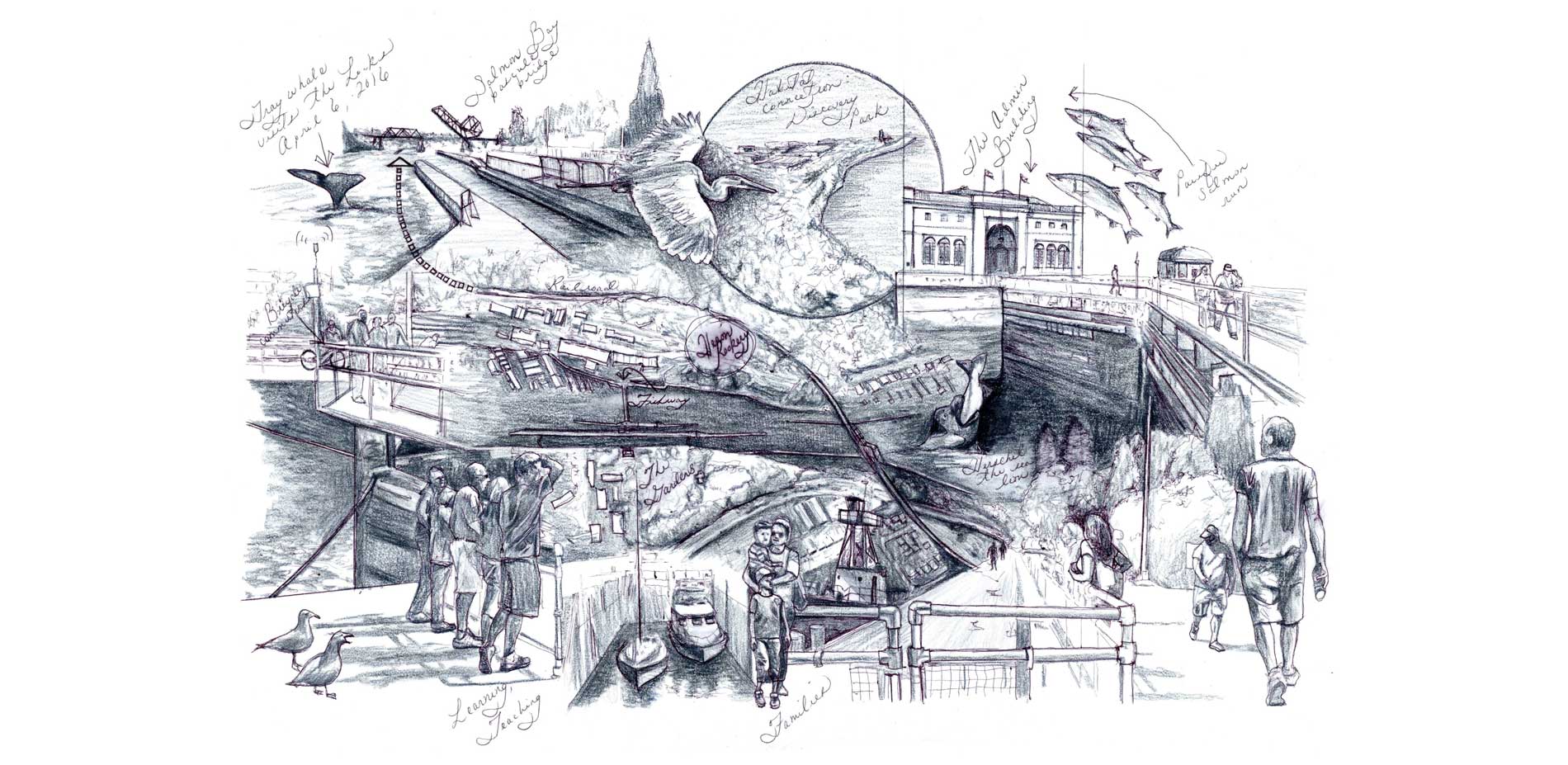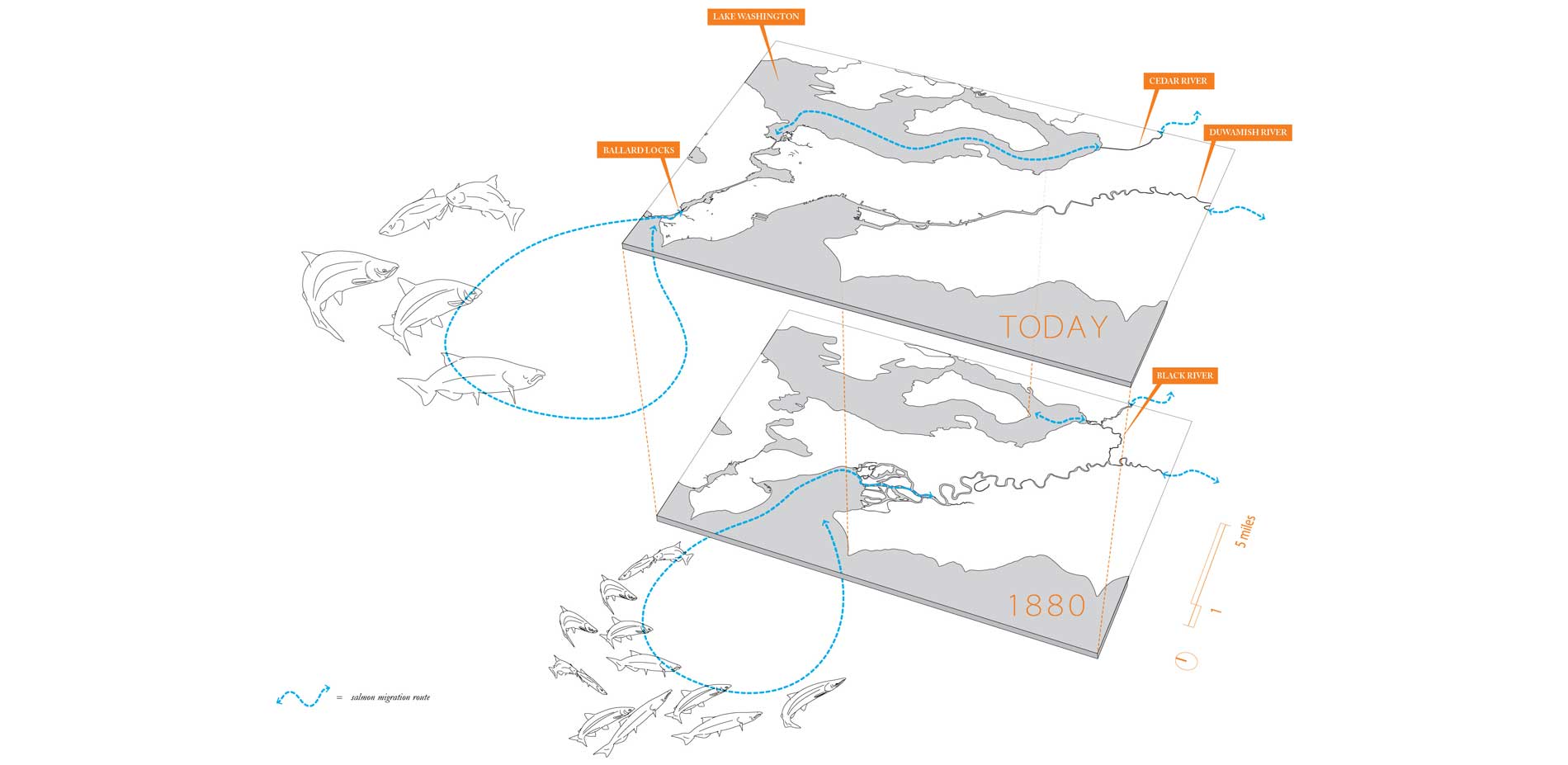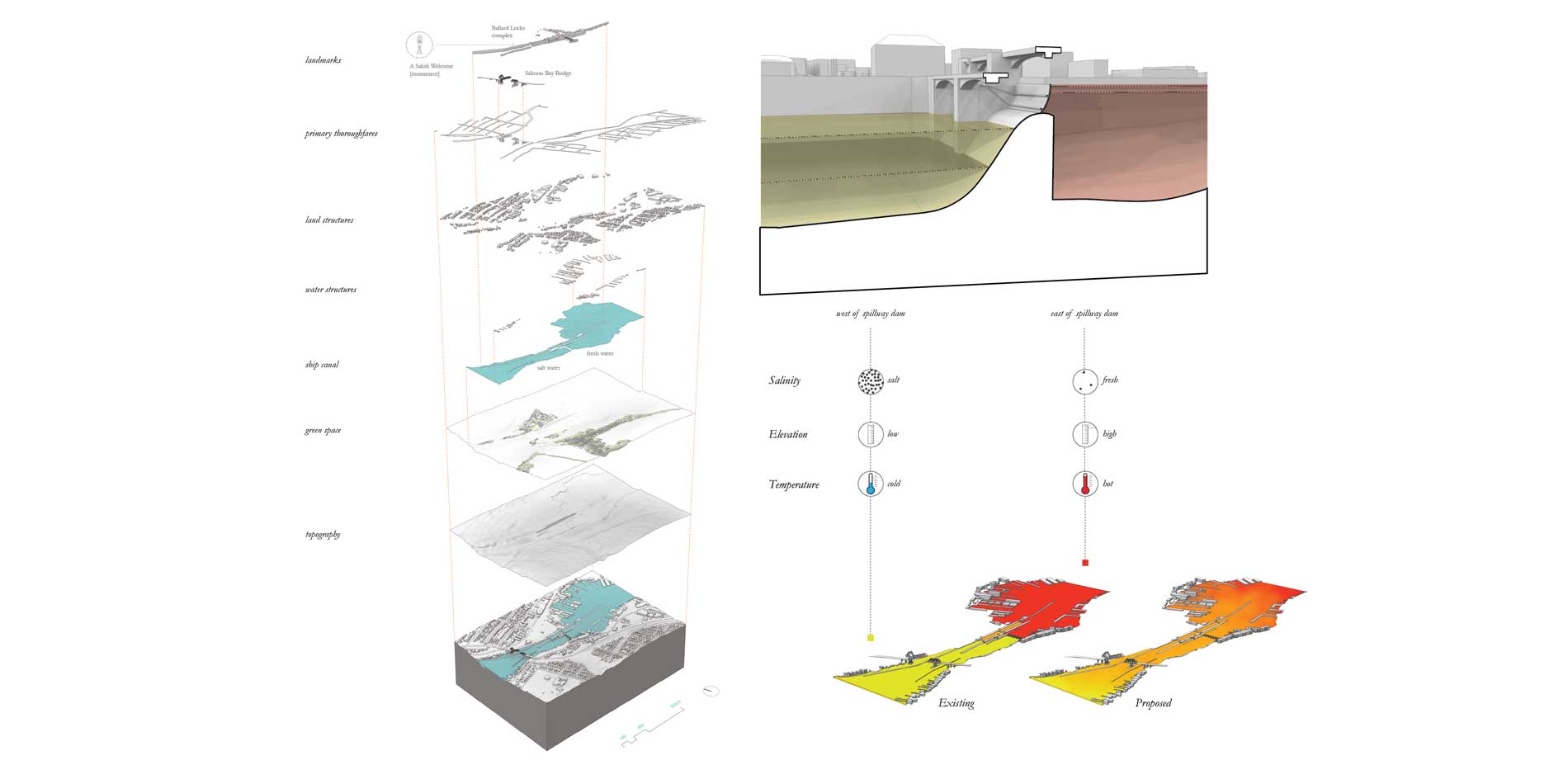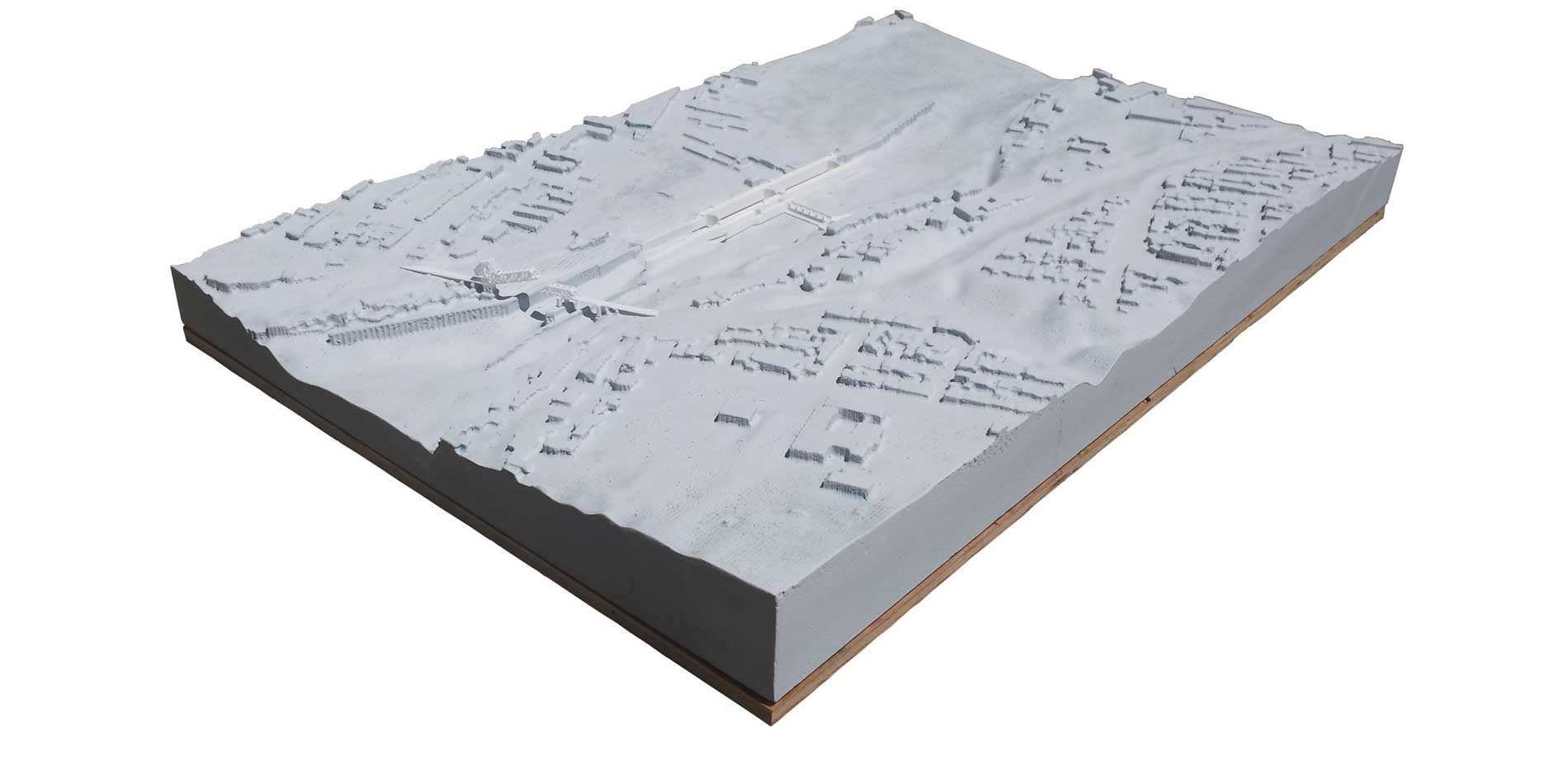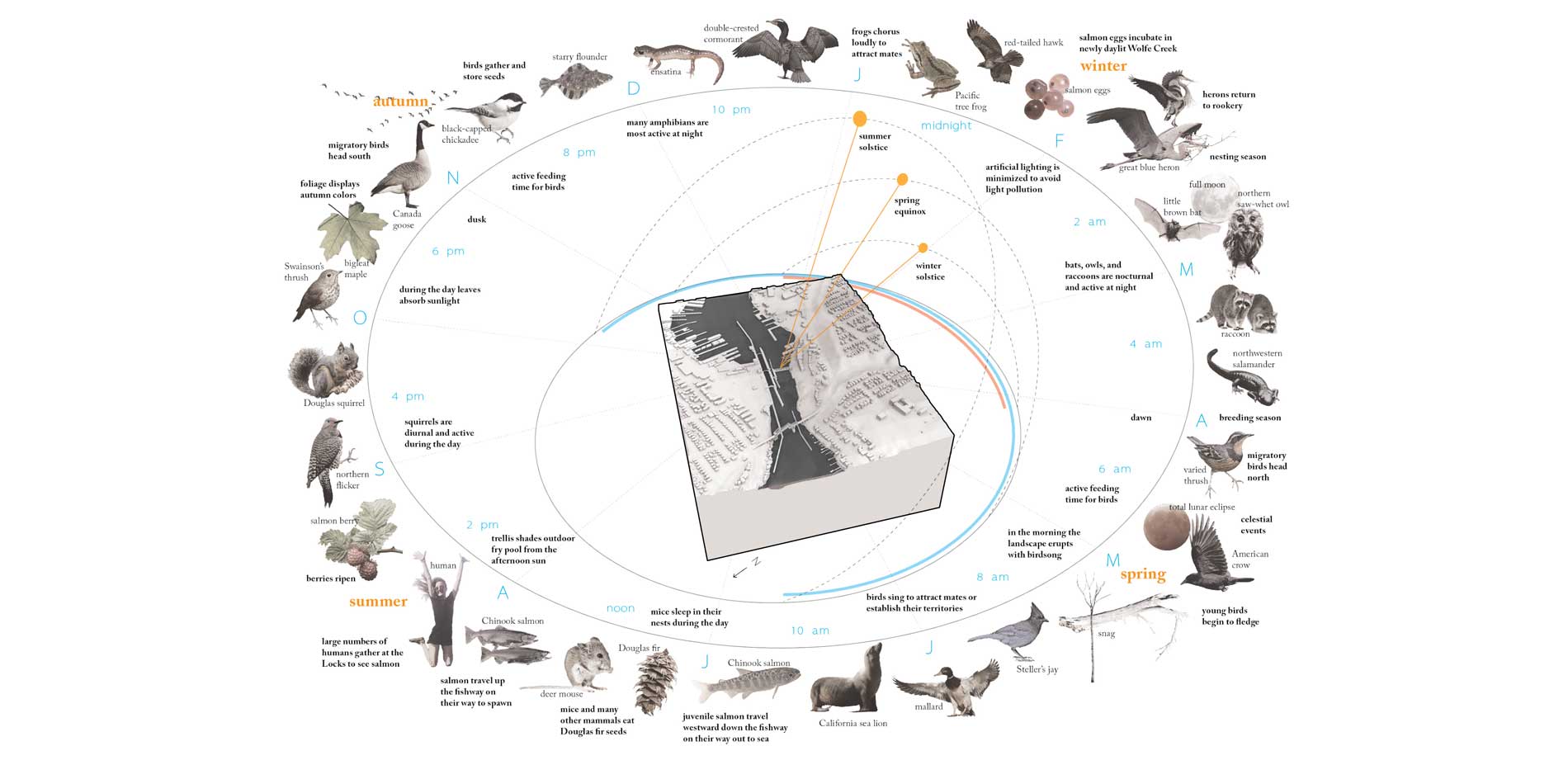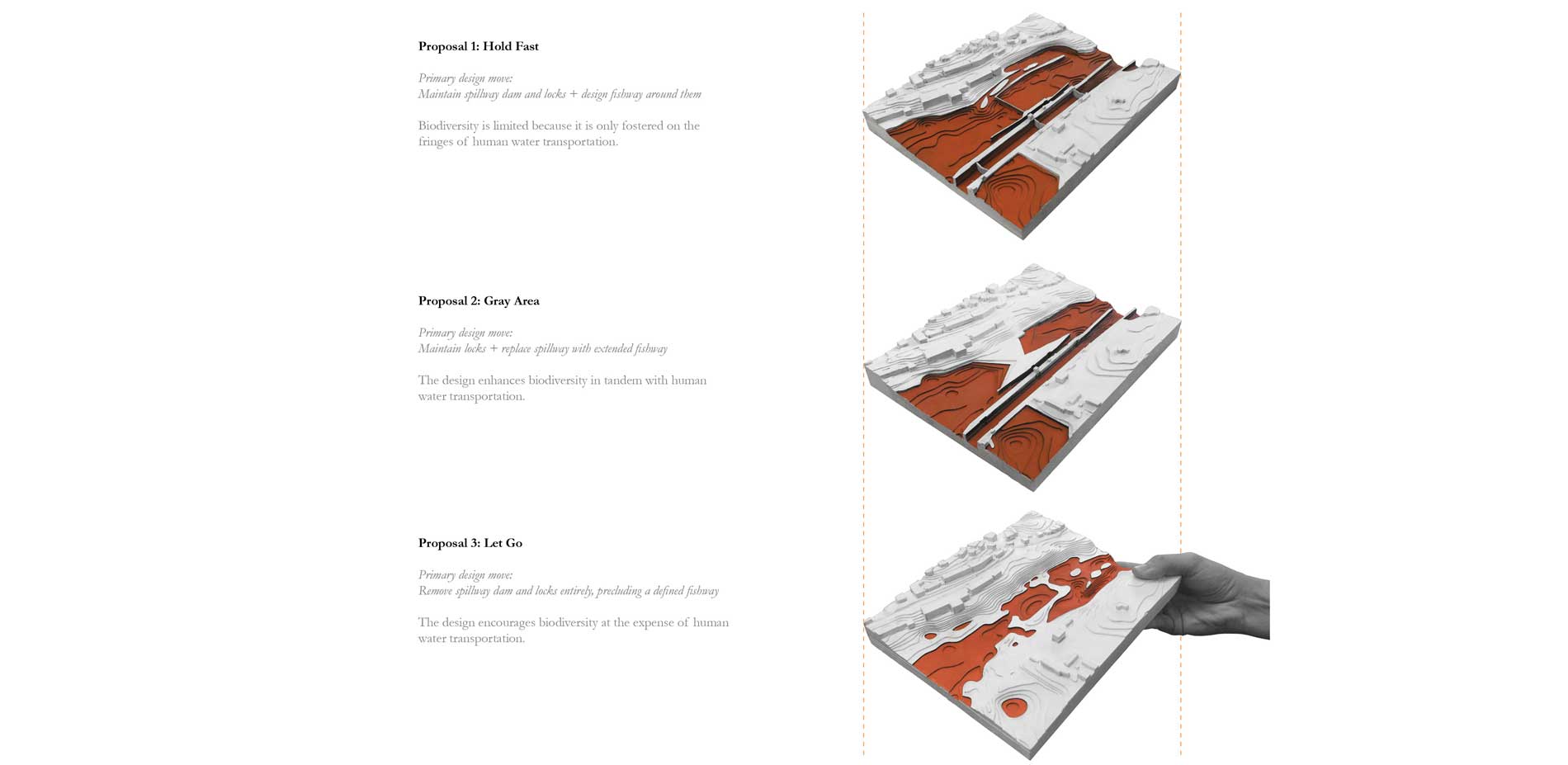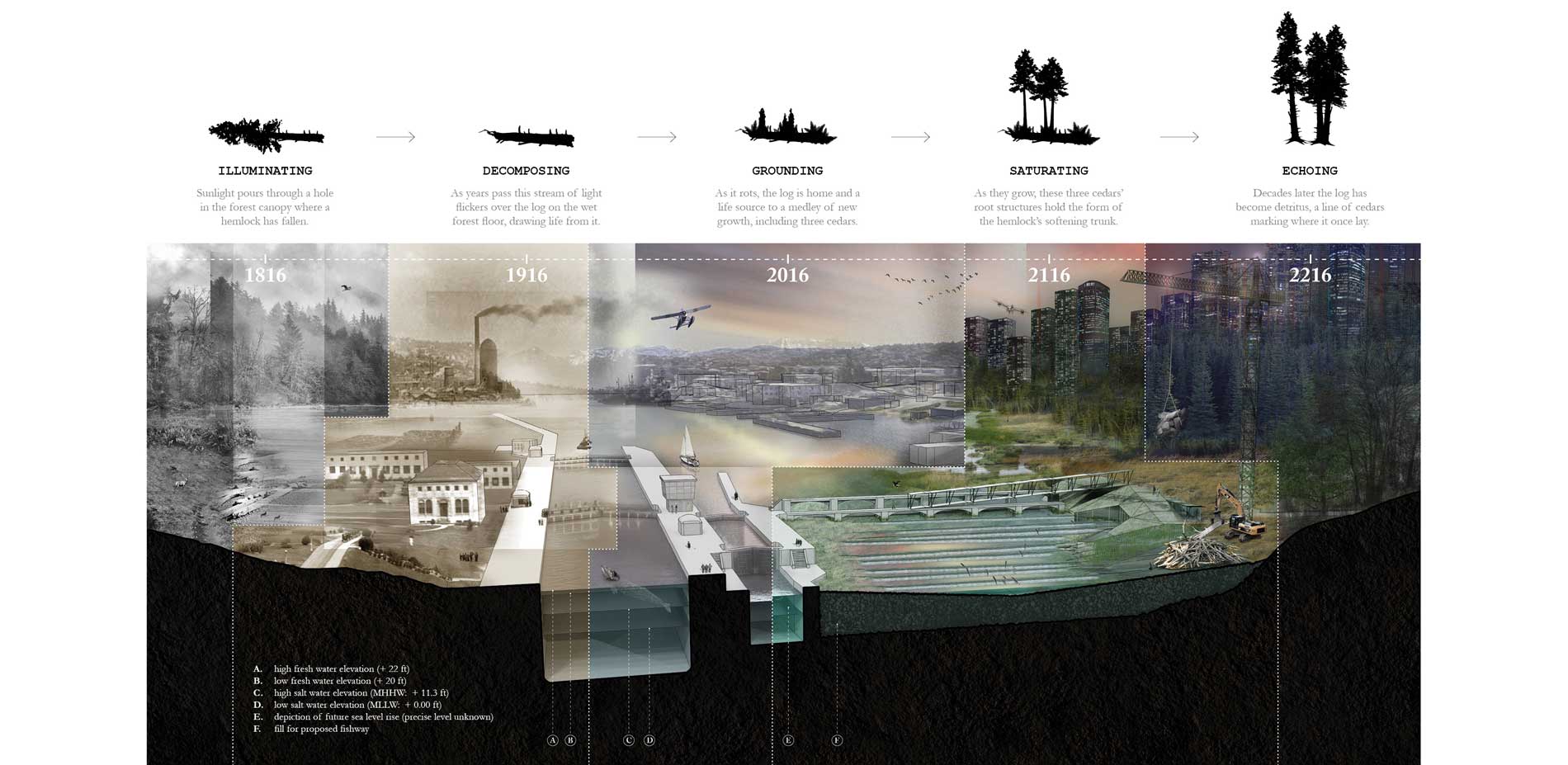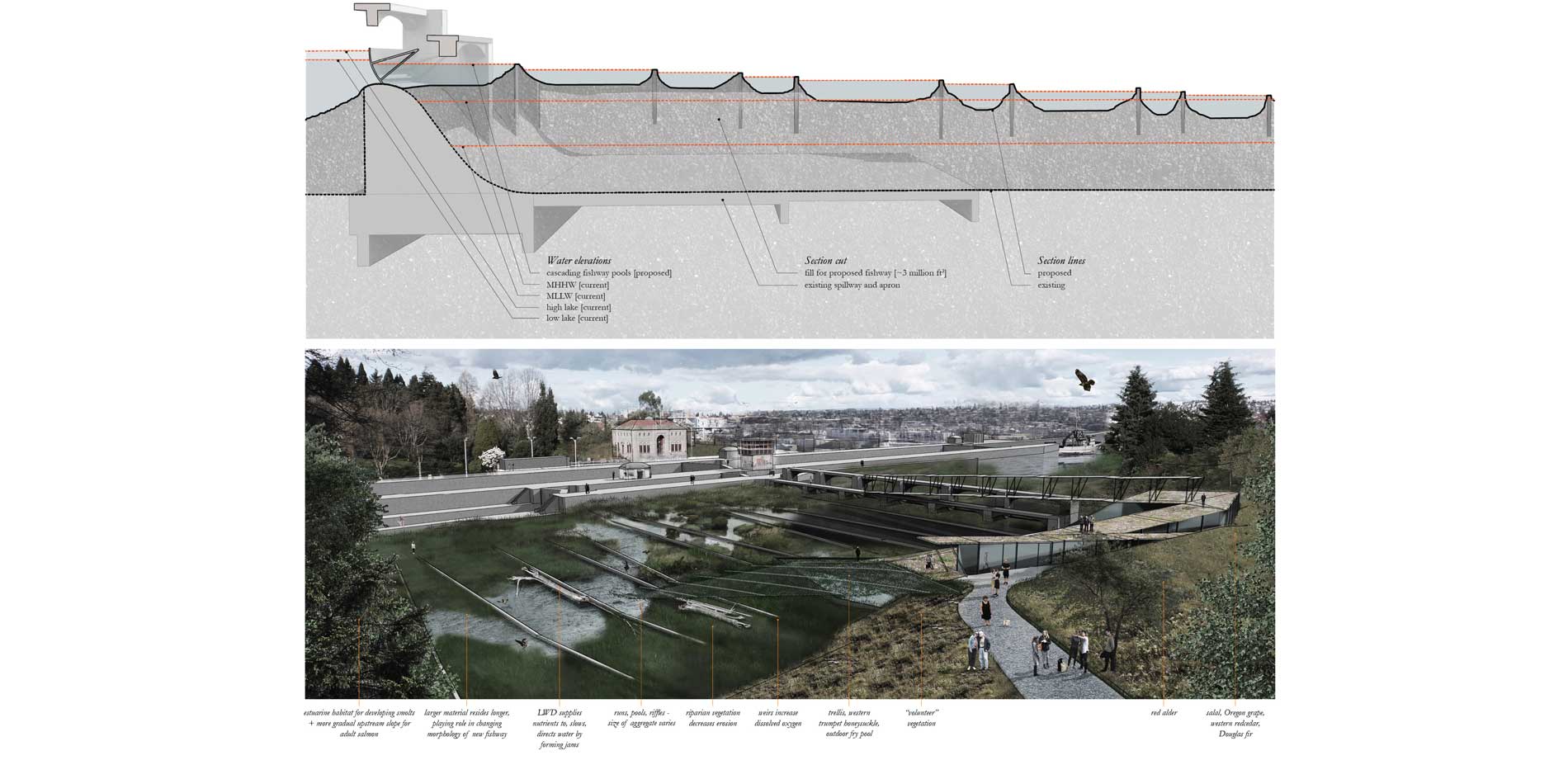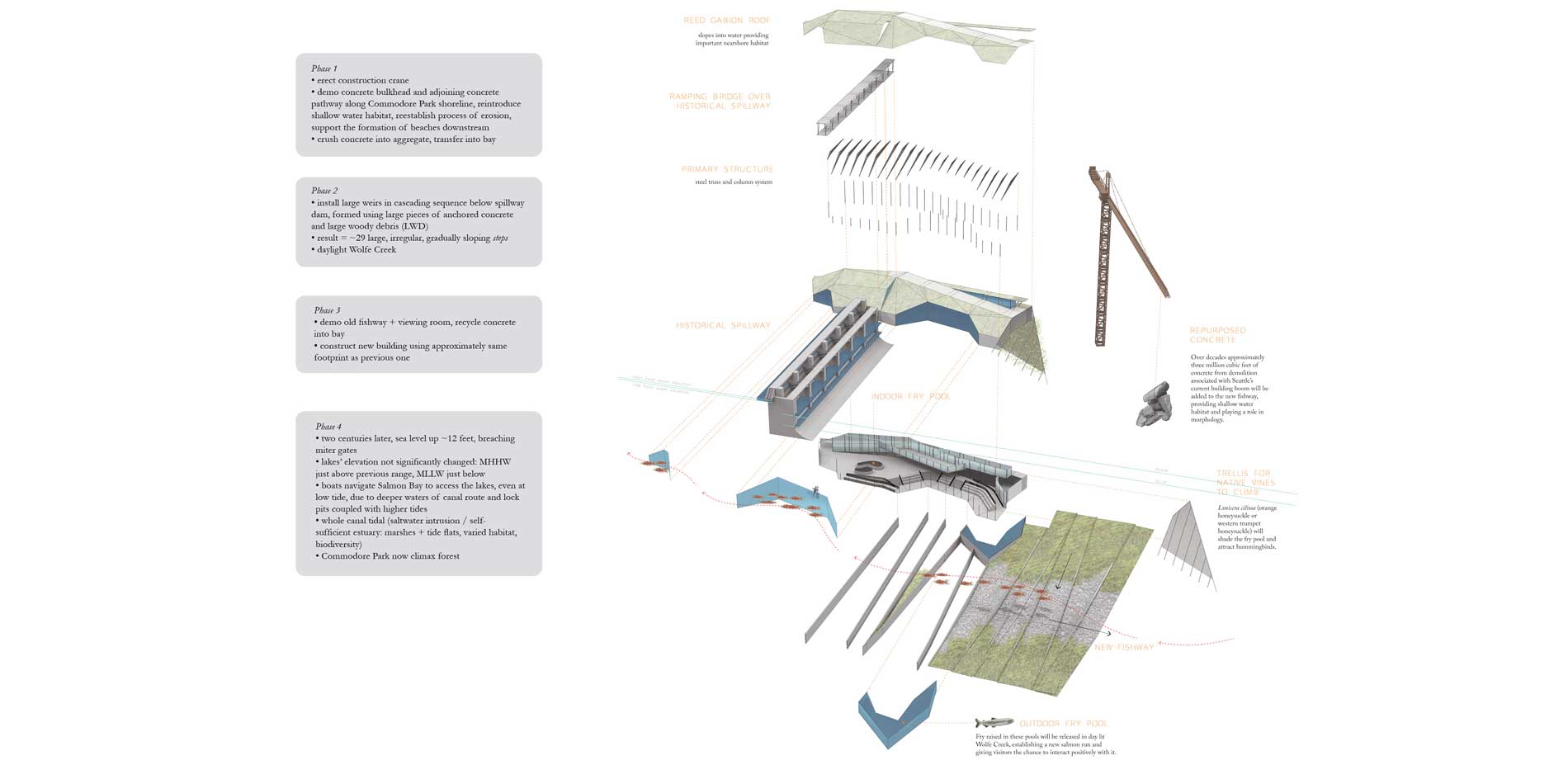Concrete Nurse Logs: Spawning Biodiversity from Ballard's Century-Old Locks
HONOR
General Design
Settle, WA, USA | Hillary Pritchett, Associate ASLA | Faculty Advisors: Ken Tadashi Oshima; Ken Yocom; Robert Corser
University of Washington
Projects like this have typically been the purview of civil engineers. Here landscape architects are saying, “I can work on canals.” The boundaries are widened. “I can extend my voice.”
- 2017 Awards Jury
PROJECT STATEMENT
This project embraces the task of biodiversity conservation within the realm of design. In the midst of an anthropogenic mass extinction on Earth—the most menacing of the current environmental crises—it advocates for the prioritization of biodiversity conservation in any design project. A bold articulation of the attitude that has engendered mass extinction, the U.S. Army Corps of Engineers-operated Hiram M. Chittenden Locks is emblematic of its early twentieth century origins for its rigid hydrologic control of an entire watershed, severely impacting the pattern and success of migration for several populations of Pacific salmon. As Seattle commemorates the centennial of the opening of one of its most popular yet least understood sites, this project re-envisions a complex that continues to fulfill the requirements of human water transportation but with increased biodiversity as a defining goal. The proposed phasing approach looks forward—and backward—centuries and considers the existing historical structures as metaphorical nurse logs that evade obsolescence through their decay.
PROJECT NARRATIVE
1. ILLUMINATING: Defining the Problem and Developing a Critical Stance
In this era of massive biodiversity loss, the web of life that sustains all species, including our own, is threatened. The formula for immobilizing a mass extinction does not lie within one discipline. Experts across disciplines are recognizing the need for consilience to solve our era’s obstacles. This project supports a paradigm, aligned with today’s context, in which maximizing biodiversity is the central goal from the preliminary stages of a design project. Biodiversity as a concept is useful because it offers a metric, something achievable, that imprecise terms such as “ecology” and “ecosystem” do not provide.
2. DECOMPOSING: Architecture and Biodiversity
There is very little published that explicitly addresses the role of architecture in biodiversity conservation, an echo of the current trend in both academia and professional practice. One explanation for architecture’s slowness to assume responsibility for designing for increased biodiversity is simply that the task largely falls on the shoulders of landscape architects. Unfortunately, landscape architecture is often diminished to an afterthought in design strategies, meaning often so too is non-human habitat. If habitat for non-human species is considered only an embellishment, opportunities are missed—opportunities to engage biologists and to incorporate principles of biology in a design's foundational concept. While each profession, landscape architecture and architecture, is vital in its own right, opportunities for real progress toward designs that support biodiversity are not possible without consultations from outside specialists, namely biologists, at every stage of the design process.
3. GROUNDING: The Site
The Hiram M. Chittenden Locks complex or the “Ballard Locks” at the mouth of the human-excavated and human-controlled Lake Washington Ship Canal exemplifies the issues discussed in the preceding sections, and offers an opportunity to explore them at an empirical scale. The concrete complex has more or less operated in the same manner throughout the century in which it has raised and lowered vessels between the levels of saltwater Puget Sound and freshwater Lakes Union and Washington. However, there is more to the complex than its pair of locks and spillway dam. The Ballard Locks is many things to many people. It is one of the most popular destinations in Seattle, a gateway to boaters, and a stage where boats entertain. It is also a pedestrian and bicyclist bridge linking the otherwise disconnected neighborhoods of Magnolia and Ballard. A fish ladder and subaquatic viewing room anchor the south end of the dam, offering city people the opportunity to interact with a species so wild it links the briny deep with hidden forest streams. Adjacent Commodore Park is home to the largest great blue heron rookery in Seattle. Indeed, the Ballard Locks is one of a kind, and cherished by many demographics.
Even so, the complex is ultimately a dam, the result of extensive human engineering that dramatically altered the ecology of Salmon Bay and the larger watershed. It forms a hard barrier in lieu of the soft gradient of an estuary, contributing to habitat and biodiversity loss. The decision to excavate the Ship Canal and construct the locks complex led to the displacement of human and non-human populations. To the west of the complex there is salt water; to the east, freshwater. These two water elevations have separate ranges in fluctuation. The water elevation west of the Locks is subject to the tides—mean higher high water (MHHW) is roughly 11.3 feet higher than mean lower low water (MLLW)—and to rising sea levels. In contrast, the water elevation east of the locks fluctuates about two feet (between 20 and 22 feet above MLLW) per year due to the spillway dam, which tightly controls the elevation of the lakes. During a low tide in the summer, when the lakes are at their highest, the locks could separate a 22-foot change in water elevation.
The Ship Canal was conceived and cut by humans on a brief human time scale compared to that of the retreating ice sheet that excavated Lakes Union and Washington and Puget Sound. Shaping a landscape—a watershed—is an act of iteration; rashly altered places cannot be returned to their former selves. Like many ultra-urban sites, the complex cannot realistically be restored to a reference condition. It is not possible to fill in the Fremont and Montlake Cuts and watch the watershed re-diversify in rewind. Seattle has been built on the severe city planning and engineering choices of the late nineteenth and early twentieth centuries. While we can oppose those choices, we cannot ignore the context that has been shaped by them.
4. SATURATING: Science Consultations
The Ballard Locks is an engineering feat, but a failure of science. It demonstrates why the concepts of biology should be integral to and integrated into every design endeavor to support a biodiverse world. Accordingly, to generate a design solution at the Ballard Locks that best serves biodiversity, I consulted seven scientists: three professors, three employees of the Army Corps of Engineers, and a member of a group dedicated to local herons. The engagement of these scientists from different platforms helped ensure a more comprehensive understanding of the site and the identification of the most urgent problems and opportunities.
Through these consultations I learned that the Ballard Locks is a threat to salmon—an oftentimes fatal obstacle in the already harrowing journey from natal tributary to open ocean at the start of life, and the reverse journey back to natal tributary before death—because it is a rigid wall between water conditions: salinity, temperature, and elevation.
5. ECHOING: Design Response
What form does a design take that is not just sustainable but concedes its position to site processes—a design that willingly decays? The proposed fish ladder, or rather “fishway,” and education center were designed with biodiversity as a defining goal. Made almost entirely of concrete, the locks complex is a testament to the frequent endeavor in the design professions to resist entropy, the sands of time, with rigidity rather than resilience. In response to what I learned during the consultations with scientists, the design, a phasing strategy, is a metaphorical nurse log, a gradient between water temperature, salinity, and elevation. This gradient through space and time is achieved using the locks complex itself and eventually sea level rise. The design represents a shift in perspective: the locks complex is a damaging barrier, but becomes material for a future biodiverse estuary. Likewise, though sea level rise is a consequence of the anthropogenic environmental crisis that is reducing biodiversity, the design incorporates it as a tool for eventually increasing biodiversity by breaching the locks' miter gates and creating an estuary. This mindset frees designers to push forward with hope rather than bemoan history. It also gives purpose to what otherwise might be viewed as threats.
